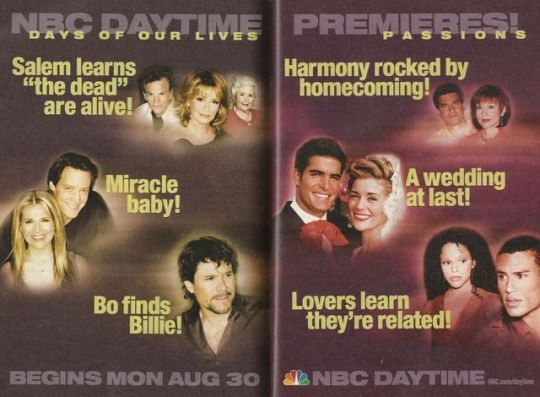#Peter Steinmetz
Text

60 notes
·
View notes
Text
293: Weather Permitting // In the Ground

Into the Ground
Weather Permitting
1987, VOT
A late ‘80s college rock band from Montreal with hints of seemingly every good American and English alternative act of the decade (Galaxie 500, Green on Red, Felt, The Cure, the dang Colorblind James Experience) but basically no Canadian ones. It’s a bit bewildering to think of this band operating in their particular place and time, and yet I have the record here in my hand (a blind buy), and so I’m compelled to accept it on its terms. Composed of brothers Peter and Andrew Steinmetz on guitar and vocals with fellow sausage-stocker Bruno Steiner on bass and non-Hun Gary McGirr on drums, Weather Permitting seem to be fabulously well-schooled in the major branches of the jangle pop tree. They’ll flash from a Feelies-like workout (“Land”) to gawky Talking Heads pop (“After All This”) with aplomb, but there’s just enough consistency to the band’s lyrical perspective and general vibe that it feels less like a pastiche and more like an “I contain multitudes” sort of situation. At their best (“In the House”; “Into the Ground”) they nail the brainy adolescent sense of becoming that gives early indie rock its timeless emotional ground; at their weakest (“Her Moods Will Change”) the worst you can say is their harmonies are a little dorky. Into the Ground is a definite score if you come across it. It's likely one of the best Canadian alternative records from that lost decade before we really figured out what we were doing.
youtube
293/365
#montreal#montreal music#weather permitting#college rock#indie rock#alternative rock#jangle pop#'80s music#'80s indie#music review#vinyl record#canadian music
1 note
·
View note
Text
Arbeiten im neuen „Et Bröckske“ – Wahrzeichen im Herzen Krefelds

Köln/Krefeld. Mit Fertigstellung des Rohbaus und der Gebäudehülle vom „Et Bröckske“ erreicht der Kölner Projektentwickler Qvadrat einen weiteren Meilenstein seines im Jahr 2019 begonnenen Vorhabens. Damit gibt das Family Office den Startschuss für die weiteren Ausbauarbeiten der Räumlichkeiten, nachdem 2022 ganz im Zeichen der Abrissarbeiten gestanden hatte und erst diesjährig mit den Rohbauarbeiten begonnen wurde. „Mit dem 'Et Bröckske' verbinden viele Krefelderinnen und Krefelder schöne Erinnerungen. Die Umgestaltung dieses besonderen Ortes ist auch deshalb so gelungen, weil Altes bewahrt wird und Modernes entsteht, weil Nostalgie und Neubeginn Hand in Hand gehen. Ein Wahrzeichen unseres Stadtzentrums bleibt auf diese Weise optisch erhalten, während zugleich spannende neue Nutzungen umgesetzt werden und Frequenz in unsere Innenstadt bringen", betont Oberbürgermeister Frank Meyer.
Rund 3.795 Quadratmeter Bruttogeschossfläche warten auf vier Vollgeschossen sowie im Dachgeschoss auf neue Mieter. Die neun Mieteinheiten ab 273 Quadratmeter eignen sich für Anwaltskanzleien und Beratungsgesellschaften ebenso wie für Arzt- und Heilpraxen. Im Erdgeschoss wird der angesagte Systemgastronomieanbieter „Peter Pane“ das neue „Et Bröckske“ mit Leben und Wohlfühlatmosphäre füllen und wieder zu dem machen, was es jahrzehntelang war: ein Ort der Begegnung und des Miteinanders.
Insgesamt sind es 2.759 Quadratmeter, die als moderne Büro- beziehungsweise Praxisflächen flexibel genutzt werden können. Das Dachgeschoss punktet mit einem besonderen Highlight: einer Büro-/Praxiseinheit über zwei Ebenen inklusive zwei großer Dachterrassen. Der Neubau ermöglicht insgesamt flexible Bürostrukturen: So sind hier attraktive Arbeitsplätze beispielsweise auch in Open Spaces oder Zellenbüros denkbar. Alle Räumlichkeiten sind klimatisiert. „Bei deren Ausbau können wir die Anforderungen und Wünsche der Mieter umsetzen“, so Arne Grundmann, Leiter Projektentwicklung der Qvadrat GmbH.
Das barrierefreie „Et Bröckske“ erreicht als Denkmal den Nachhaltigkeitswert „Effizienzhaus 70“. Die sanierten historischen Holzsprossenfenster erzeugen dabei ein besonderes Flair und ermöglichen „einen wunderschönen Ausblick in das Grün des Kirch- und Willy-Göldenbach-Platzes“, schwärmt Grundmann und bringt´s auf den Punkt: „Das gibt´s nicht im Home-Office, sondern nur in der Innenstadt.“
Das „Et Bröckske“ ist seit jeher optimal an das öffentliche Personennahverkehrsnetz angebunden und selbst vom Krefelder Hauptbahnhof fußläufig erreichbar. Wer auf den eigenen PKW „setzt“, findet im 150 Meter entfernten Parkhaus ausreichend Stellplätze, die auch für künftige Nutzer „gesichert“ sind.
Ab Anfang 2024 sollen die ersten Mieter ins neue „Et Bröckske“ einziehen. Mit der Vermarktung der für die Mieter provisionsfreien Flächen hat Qvadrat das Krefelder Maklerunternehmen SIC Schneewind Immobilien Consulting beauftragt.
Über Qvadrat
Qvadrat ist ein 2018 in Köln gegründeter Immobilien-Dienstleister mit dem Fokus auf Projektentwicklung, Energetische Sanierung, Asset Management und Finanzierung. Das Unternehmen investiert in innovative Projekte sowie in Bestandsimmobilien mit Wertsteigerungspotential, die einen nachhaltigen Beitrag zu einer zukunftsgerichteten, auf Lebensqualität bedachten Stadtentwicklung leisten. Das besondere Interesse von Qvadrat gilt Wohn- und Gewerbeobjekten, die deutlich aus der Masse herausstechen. Hierzu zählen auch gewerbliche Immobilien wie das Et Bröckske, die architektonisch ansprechend und den vielfältigen Anforderungen des modernen Arbeitslebens gerecht werden.
Bildmaterial
Visualisierung Projekt
Bildzeile: Im „Et Bröckske“ – Annegret Angerhausen-Reuter (KREFELD BUSINESS), Oberbürgermeister Frank Meyer (Stadt Krefeld), Arne Grundmann (qvadrat), Jürgen Steinmetz (IHK Mittlerer Niederrhein), Marcus Beyer (Stadt Krefeld), Urheber: Roberto Pfeil, Nutzungsrechte: qvadrat
www.qvadrat.com
Read the full article
0 notes
Text
SOSTEN INTERNASHONAL PA OUTORIDAT DI AVIASHON SIVIL DI KÒRSOU
MINISTERIO KONSERNÍ TRÁFIKO, TRANSPORTE I PLANIFIKASHON URBANO
SOSTEN INTERNASHONAL PA OUTORIDAT DI AVIASHON SIVIL DI KÒRSOU
PUBLIKÁ RIBA 31 ÒKTOBER 2023
Wilemstad – Resientemente, Minister Charles Cooper huntu ku Direktor di Outoridat di Aviashon di Kòrsou, sr Peter Steinmetz, a reuní ku representante di e Organisashon Internashonal di Aviashon Sivil (ICAO). ICAO tabata na Kòrsou pa asistí ku…

View On WordPress
0 notes
Text
Mythos #MIX-1 “Gut und Böse”
🇩🇪 „Drogen sind gefährlich, böse und verboten.“
Drogen sind völlig wertneutral – dessen Moleküle sind weder gut noch böse, sie sind einfach nur Bestandteile mit spezifischen Eigenschaften, die positive und negative Effekte mit sich bringen können, sie können förderlich sein oder schädigen. Die Prohibition hingegen basiert auf Rassismus, Misstrauen und Stigmatisierung – ziemlich böse, oder?
Weniger die verbotenen Substanzen an sich sind gefährlich, sondern das Verbot dessen und die Folgen bezüglich Qualität, Risikoverhältnisse und Strafverfolgung. Ein unaufgeklärter Umgang, der das Ergebnis des Verbotes ist, und überhaupt das Verbot an sich machen diese Substanzen erst gefährlich, da sie völlig unreguliert sind.
🇬🇧 „Drugs are dangerous, evil and forbidden.“
Drugs are completely neutral in value – their molecules are neither good nor bad, they are simply components with specific properties that can bring about positive and negative effects, they can be beneficial or harmful. Prohibition, on the other hand, is based on racism, distrust, and stigma – pretty evil, right?
It is not so much the banned substances themselves that are dangerous, but the ban on them and the consequences in terms of quality, risk ratios and criminal prosecution. Uninformed use that is the result of the ban, and the ban itself, make these substances dangerous in the first place, because they are completely unregulated.
Verweise:
Dr. Fabian Pitter Steinmetz [Ab: 11.12. 2020] * ehem.: “Dr. Pierre Tailleur” (Dr. Peter Taylor). * Faden: “Drogen sind völlig wertneutral”: https://twitter.com/DocTailleur/status/1025872617868324865 (05.08.2018).
“Alltagsgespräch über psychotrope Substanzen (Drogen™)“: https://anarchismus.de/blog/alltagsgespraech-ueber-psychotrope-substanzen-drogen-tm: “Na eben, weil Drogen gefährlich und verboten sind.“ (29.11.2022).
Erstellt am: 26.10.2022,
Bearbeitet: 30.10.2022.
Schlagworte: Gut, Positiv, Nützlich, Vorteilhaft, Wertvoll; Böse, Negativ, Schlecht, Schädlich, Unbrauchbar; Einordnung, Klassifikation, Klassifizierung.
#Drogen#Rauschmittel#Mythologie#Mythen#Mythos#Scheinargumente#Trugschlüsse#Unwahrheiten#Lügen#Missverständnisse#Auswirkungen#Spezifizierung#Definition#Gefährlichkeit#Risiken#Gesundheit#Legalität#Verbote#Verfolgung#Strafverfolgung
0 notes
Photo

Peter Steinmetz. Copenhagen. November, 2019
#BW#Black and White#Preto e Branco#Noir et Blanc#黒と白#Schwarzweiß#Peter Steinmetz#Copenhagen#2011#2010s#couples#casais#カップル#夫婦#Paare#masks
25 notes
·
View notes
Photo

#Michael Bell#Lee Dannacher#Tony Pastor#Diane Steinmetz#Buzzy's Recording#B & B Sound#Broughton Winicki Services#Credits#Peter Pan and The Pirates#Fox's Peter Pan and The Pirates
1 note
·
View note
Photo

“NBC Daytime Premieres!”
Josh Taylor, Deidre Hall & Frances Reid (Roman, Marlena, & Alice, DAYS OF OUR LIVES)
Melissa Reeves & Matthew Ashford (Jennifer & Jack, DAYS OF OUR LIVES)
Peter Reckell (Bo, DAYS OF OUR LIVES)
Richard Steinmetz & Leigh Taylor Young (Martin & Katherine, PASSIONS)
Galen Gering & McKenzie Westmore (Luis & Sheridan, PASSIONS)
Brooke Kerr & Charles Divins (Whitney & Chad, PASSIONS)
Soap Opera Digest Print Ad (September 7, 2004)
#Soap Opera Digest#SOD#soap opera#Days of Our Lives#DAYS#DOOL#Passions#Josh Taylor#Deidre Hall#Frances Reid#Matthew Ashford#Melissa Reeves#Jack & Jennifer#Peter Reckell#Richard Steinmetz#Leigh Taylor Young#Galen Gering#McKenzie Westmore#Brooke Kerr#Charles Divins#Jack & Jennnifer#Luis & Sheridan#Chad & Whitney
8 notes
·
View notes
Photo

Johannes Karl Hermann Futuristic Linocut, 1919.
Johannes Karl Herrmann (1893-1962) gehört wie Johannes Molzahn und Peter Röhl zu den Bauhäuslern der ersten Stunde, die 1919 gemeinsam mit Gropius die Avantgardekunstschule in Weimar aufbauten. Harry Graf Kessler urteilte damals über ihn: »Herrmann erreicht ein wahres Pathos der abstrakten Form.«
Als ausgebildeter Steinmetz und vormals Schüler der Bildhauerklasse der Großherzoglichen Kunsthochschule in Weimar trat Herrmann am Bauhaus mit ungegenständlichen, dynamisch-expressiven Gipsplastiken hervor. Diese dienten als Inspirationsquelle u. a. für Johannes Ittens Würfelplastik und Walter Gropius´ Märzgefallenen-Denkmal. In der progressiven Berliner STURM-Galerie von Herwarth Walden war Herrmann bis 1921 auf vier Ausstellungen vertreten.
(via ebay.de - kalisada)
#art#kunst#farblinolschnitt#colour linocut#bauhaus art#bauhaus künstler#european artworks#vintage print#futurism#printmaking#vinatge artworks#Johannes Karl Hermann#futurismus#avant-garde art#1919#deutscher künstler#bauhaus futurismus
95 notes
·
View notes
Text
Andy Serkis on Returning to Play Gollum in 'The Hobbit'
Andy Serkis on Returning to Play Gollum in ‘The Hobbit’

WRITER’S NOTE: This article was written back in 2012.
It is a thrill to see Andy Serkis return to the role of Gollum in Peter Jackson’s “The Hobbit: An Unexpected Journey.” While we marvel at the special effects which gave Gollum his unique if wretched look, it was Serkis who breathed life into the character in a way no one else could. His success in “The Lord of the Rings” got him cast in “King…
View On WordPress
#2012 Movies#Acting#Addiction#Andy Serkis#Ashley Dvorkin#Eadweard Muybridge#Fox News#Francis Bacon#Gollum#J.R.R. Tolkien#James Rocchi#Katy Steinmetz#Martin Freeman#MGM#Motion Capture#MSN Entertainment#New Line Cinema#Peter Jackson#The Hobbit#The Lord of the Rings#Time Magazine#Warner Brothers
0 notes
Text
Interesting Papers for Week 33, 2021
Interhemispheric transfer of working memories. Brincat, S. L., Donoghue, J. A., Mahnke, M. K., Kornblith, S., Lundqvist, M., & Miller, E. K. (2021). Neuron, 109(6), 1055-1066.e4.
Behavioral Time Scale Plasticity of Place Fields: Mathematical Analysis. Cone, I., & Shouval, H. Z. (2021). Frontiers in Computational Neuroscience, 15, 19.
Gating of hippocampal rhythms and memory by synaptic plasticity in inhibitory interneurons. He, X., Li, J., Zhou, G., Yang, J., McKenzie, S., Li, Y., … Ma, H. (2021). Neuron, 109(6), 1013-1028.e9.
Robust information routing by dorsal subiculum neurons. Kitanishi, T., Umaba, R., & Mizuseki, K. (2021). Science Advances, 7(11), eabf1913.
Frequency of theta rhythm is controlled by acceleration, but not speed, in running rats. Kropff, E., Carmichael, J. E., Moser, E. I., & Moser, M.-B. (2021). Neuron, 109(6), 1029-1039.e8.
Preexisting hippocampal network dynamics constrain optogenetically induced place fields. McKenzie, S., Huszár, R., English, D. F., Kim, K., Christensen, F., Yoon, E., & Buzsáki, G. (2021). Neuron, 109(6), 1040-1054.e7.
Does Attention Increase the Value of Choice Alternatives? Mormann, M., & Russo, J. E. (2021). Trends in Cognitive Sciences, 25(4), 305–315.
Stress undermines reward-guided cognitive performance through synaptic depression in the lateral habenula. Nuno-Perez, A., Trusel, M., Lalive, A. L., Congiu, M., Gastaldo, D., Tchenio, A., … Mameli, M. (2021). Neuron, 109(6), 947-956.e5.
A neural correlate of visual feature binding in primate lateral prefrontal cortex. Parto Dezfouli, M., Schwedhelm, P., Wibral, M., Treue, S., Daliri, M. R., & Esghaei, M. (2021). NeuroImage, 229, 117757.
Striatal activity topographically reflects cortical activity. Peters, A. J., Fabre, J. M. J., Steinmetz, N. A., Harris, K. D., & Carandini, M. (2021). Nature, 591(7850), 420–425.
The structure dilemma in biological and artificial neural networks. Pircher, T., Pircher, B., Schlücker, E., & Feigenspan, A. (2021). Scientific Reports, 11(1), 5621.
A predictive account of how novelty influences declarative memory. Quent, J. A., Henson, R. N., & Greve, A. (2021). Neurobiology of Learning and Memory, 179, 107382.
Cochlear neural degeneration disrupts hearing in background noise by increasing auditory cortex internal noise. Resnik, J., & Polley, D. B. (2021). Neuron, 109(6), 984-996.e4.
Dopamine-based mechanism for transient forgetting. Sabandal, J. M., Berry, J. A., & Davis, R. L. (2021). Nature, 591(7850), 426–430.
An autonomous debating system. Slonim, N., Bilu, Y., Alzate, C., Bar-Haim, R., Bogin, B., Bonin, F., … Aharonov, R. (2021). Nature, 591(7850), 379–384.
Looking for Image Statistics: Active Vision With Avatars in a Naturalistic Virtual Environment. Straub, D., & Rothkopf, C. A. (2021). Frontiers in Psychology, 12, 431.
Tonic firing mode of midbrain dopamine neurons continuously tracks reward values changing moment-by-moment. Wang, Y., Toyoshima, O., Kunimatsu, J., Yamada, H., & Matsumoto, M. (2021). eLife, 10, e63166.
Noninvasive neuromagnetic single-trial analysis of human neocortical population spikes. Waterstraat, G., Körber, R., Storm, J.-H., & Curio, G. (2021). Proceedings of the National Academy of Sciences of the United States of America, 118(11).
Adaptation of spontaneous activity in the developing visual cortex. Wosniack, M. E., Kirchner, J. H., Chao, L.-Y., Zabouri, N., Lohmann, C., & Gjorgjieva, J. (2021). eLife, 10, e61619.
Individual differences in experienced and observational decision-making illuminate interactions between reinforcement learning and declarative memory. Yifrah, B., Ramaty, A., Morris, G., & Mendelsohn, A. (2021). Scientific Reports, 11(1), 5899.
#science#Neuroscience#computational neuroscience#Brain science#research#cognition#cognitive science#neurobiology#neurons#psychophysics#neural networks#neural computation#scientific publications
16 notes
·
View notes
Text
A Brief History of Dwarfism
(TW/CW: cure, medical, pet culture and slavery mentioned, discriminative language)
LYZ LENZ Updated: June14, 2017 Origional: February 25, 2015
When researchers from the biopharmaceutical company BioMarin told representatives of the Little People of America about the results of a drug that could potentially cure one of the causes of dwarfism, they expected a better response than the silence they were treated to. This caught the BioMarin folks off guard. “I think they wanted us to be happy,” says Leah Smith, LPA's director of public relations. “But really, people like me are endangered and now, they want to make me extinct. How can I be happy?”
BioMarin isn’t the only company trying to eliminate dwarfism. For years doctors have been using limb lengthening and hormone treatments to counter and cure the over 400 underlying causes of dwarfism. And yet, despite these efforts to eliminate what many people see as a disability, society can’t stop staring. From The Lord of the Rings to Peter Dinklage in Game of Thrones, people have long been mesmerized by depictions of LPs. As Smith explains, “It doesn’t matter how normal I am, it’s hard for people to look at me an see anything besides Leah the LP.”
Dr. Judith Hall, a clinical geneticist whose work focuses on short-limbed dwarfism, explains that our staring and our desire to cure are intimately connected. “In the same way that ancient societies viewed those people with differences as a pathway to the divine,” Hall says, “I see them as a pathway to access the knowledge of nature. There is so much to be learned about humans and our genetic make-up by studying the genetics of people with short stature and anyone with a ‘disability’ although I hate that term, don’t you?”
But understanding our curiosity and desire to cure requires an understanding of the history of dwarfism, which lies in the nebulous intersection of medicine and myth.
For much of early history, LPs were considered to be intimately connected to the divine. In fact, pre-literate societies often saw all people with disabilities as conduits to heaven. The ancient Egyptians associated dwarfs with Bes, the god of home, family, and childbirth; and Ptah, the god of the Earth’s essential elements. (Both gods—representing youth and the Earth—play a role in enduring myths and stereotypes, like the fairy tales that claim that dwarfs live underground, or the stereotype about the childish nature of people with short stature.) Because of their connection with the gods, dwarfs were often revered in Egypt, and were allowed to serve high roles in the government.
Whereas dwarfs in the Old Kingdom of Egypt (2575-2134 B.C.E.) were often jewelers, linen attendants, bird catchers, and pilots of boats—all positions of high-esteem, by the Middle Kingdom dwarfs were more likely to be personal attendants or nurses. These positions, while still respected, were comparatively lower status. Historians surmise that dwarfs were relegated to these roles because their short limbs made them perfect midwives and the association with the god Bes. Of course, even in this age of reverence, dwarfs lived lives of bondage.
In ancient Rome, the attitude toward dwarfs was less reverential. Owners would intentionally malnourish their slaves so they would sell for a higher price. In ancient Greece, dwarfs were associated in a menacing and lurid way with the rituals of the Dyonisian cult; art from that period shows them as bald men with out-sized penises lusting after averaged-sized women. This same pattern of reverence and bondage also appears in China and West Africa, where LPs were so often servants of the king. A 17th-century author wrote that the Yoruba people in West Africa believed dwarfs to be “uncanny in some rather undefined way, having form similar to certain potent spirits who carry out the will of the gods.” And out of a similar reverence for their stature, the courts of China employed dwarfs as entertainers and court jesters. Here there also may have been a level of fetishism; Emperor Hsuan-Tsung kept dwarf slaves in the harem he called the Resting Palace for Desirable Monsters.
By the time of the Italian Renaissance, LPs had become a court commodity all over Western Europe, Russia, and China. There are tragic tales of court dwarfs and their wild antics. Jan Bondeson writes in The Two-Headed Boy about Nicolas Ferry, the infamous court dwarf of King Sanislas Leszynski of Poland. Ferry was given to King Sanislas when he was about five years old. The King promised his father he would be given the best education and medical care. Ferry’s father didn’t even consult his wife, who had to journey to the court to say goodbye to her son. Ferry, who may have also had learning disabilities, was spoiled and terrorized the court with his antics—kicking the shins of servants and crawling up the skirts of ladies. He even threw a dog out of the window when he believed the Queen loved the dog more than him.
Another Italian, Isabella d’Este, marchioness of Mantua, viewed dwarfs as collectable items. She hoarded them in her vast palace along with art, classical writings, gold, and silver. She also tried to breed dwarfs and kept them in a series of specially designed rooms, with low ceilings and staircases to scale. This was more for their display than comfort. One of Isabella’s dwarfs was “Crazy Catherine,” an alcoholic who stole from her mistress and whose misdeeds were laughed off as entertainment. The history of courts throughout Europe and Russia tell similar tales of dwarfs employed as jesters, or little more than pets—laughed at, loved, and never fully allowed to be human.
As the age of monarchy ended, the era of medicine and medical curiosity arose to fill its place, often providing more opportunities for LPs. Dwarfs were put on display—by others or themselves—for money. In a time where very few occupations were open to LPs, putting yourself on display in a freak show was at least a way to make a living. While traveling around provided LPs with more independence, it also opened them up to the gaping and insensitive curiosity of the public and medical professionals.
It shouldn’t come as much of a surprise, then, to say that LPs were subsequently taken advantage of by greedy brokers and agents. In his book Freak Show, Robert Bogdan explains the phenomena of human exhibits, singling out the insular nature of communities as a leading cause. Animals and humans that were outside of the norm were exciting curiosities; different races, ethnicities, and disabilities were all billed as novel entertainment. Bogdan quotes a handbill advertising a Carolina dwarf in 1738 who was “taken in a wood in Guinea; tis a female about four foot high, in every part like a human excepting her head which nearly resembles an ape.”
FOR MOST OF EARLY HISTORY, THE RESPONSE OF DOCTORS TO LPS WAS TO MEASURE EVERYTHING—NOSE, HAIR, GENITALS. THIS MEANINGLESS COLLECTION OF DATA IS OFTEN ACCOMPANIED BY CONDESCENDING NOTES ON THE APPEARANCE AND INTELLECT OF THE DWARF.
From these human exhibits came the growth of dime museums, midget villages, and Lilliputian touring communities, where many LPs rose to prominence. But while these exhibitions took center stage, several LPs made incredible, albeit quieter, contributions to history. There were people like Antoine Godeau, a poet and bishop best known for his works of criticism, or economist Ferdinando Galiani, one of the leading figures in the Enlightenment. Then there’s Alexander Pope, a classical poet known as the “most accomplished verse satirist in English.” Plus Benjamin Lay, an early abolitionist and good friend of Benjamin Franklin. And Novelist Paul Leicester Ford, artist Henry de Toulous Lautrec, electrical engineer Charles Proteus Steinmetz. The list goes on.
Yet even in this time, as many LPs grew to prominence, medicine was able to do little more than collect data. Dr. Josef Mengele, the infamous Nazi doctor, kept an LP family of Romanian performers captive in Auschwitz, subjecting them to various tests and experiments that included pulling out teeth and hair specimens. Mengele is remembered as the angel of death—a cruel doctor who performed unscientific and often deadly experiments—yet his data collection on LPs isn’t much different than that of the medical community in centuries prior.
For most of early history, the response of doctors to LPs was to measure everything—nose, hair, genitals. This meaningless collection of data is often accompanied by condescending notes on the appearance and intellect of the dwarf. Even as late as 1983, Mercer’s Orthopaedic Surgery offered this observation about achondroplasia: “Because of their deformed bodies they have strong feelings of inferiority and are emotionally immature and are often vain, boastful, excitable, fond of drink and sometimes lascivious.”
The obsessive data collection reads like a stack of clues, wherein doctors hope to find an answer to the riddle of difference. With nothing else to do, like the Egyptian pharaohs and the courts of kings, doctors found themselves staring too.
In the absence of a cure, most early doctors focused on prevention. They believed that dwarfism was caused by the mother having seen another dwarf or animal. In fact, for most of medical history many disabilities and unexplained deformities were chalked up to maternal impressions. Consequently, pregnant women often sequestered themselves away from their communities, acting like they themselves had a disability.
This isn’t different from the modern approach to “curing” dwarfism. With early genetic testing, many in the LP community are worried about unborn dwarfs being allowed to be born.
In the aftermath of World War II, LPs found more and more opportunities to work outside of entertainment. This was due in part to Billy Barty, a film actor and television star who, in 1957, organized a meeting of LPs in Reno, Nevada. This meeting eventually led to the founding of the Little People of America, a powerful non-profit that advocates for the rights of LPs in America.
THE HISTORY OF DWARFS IS A HISTORY OF SUBVERSION, STEREOTYPES, EXPECTATION, AND SURVIVAL. IT’S THE HISTORY OF HOW PEOPLE TREAT OTHER PEOPLE WHO ARE DIFFERENT.
Before Barty, with the exception of circuses and traveling groups, most LPs were isolated. There was no way to band together to advocate for civil rights. A little more than 30 years after that first meeting in Reno, the Americans with Disabilities Act was passed in the United States, granting LPs more access and freedom than ever before.
The history of dwarfs is a history of subversion, stereotypes, expectation, and survival. It’s the history of how people treat other people who are different. And, while much has changed, very little is different. The tension between curiosity and cure is still prevalent. The popularity of shows like Little People, Big World and The Little Couple, while laudable for their portrayal of normal people with difference, show that we can’t stop looking at LPs. And companies like BioMarin and non-profits like Growing Stronger, which all seek to find a cure, show that we can’t stop trying to change them.
Yet, as a geneticist, Hall dismisses the notion that she is trying to change the LP community. She describes her work as merely offering a choice to individuals. “There are genetic tests for Downs Syndrome, but they haven’t eradicated people with Downs,” Hall says. “In the same way, the work I do and the work of other scientists isn’t to eradicate difference, but rather to offer options for dealing with it. It’s all about offering choices, really.”
But Smith, the LPA's director of public relations, pushes back. “The world is full of difference.” Smith says, “Sometimes I wish people would look elsewhere.”
BY LYZ LENZ
Origional Article Post: https://psmag.com/social-justice/a-brief-history-of-dwarfism-and-the-little-people-of-america
69 notes
·
View notes
Text
📇:Repositorium
Dieses hier ist eine Sammlung von möglichen Mythen bezogenen Seiten und Artikeln, sowie anderen Ressourcen.
Basis:
Bundeszentrale für politische Bildung: Rausch und Drogen - Von der Abstinenz zur Akzeptanz – Wegmarken der deutschen Drogenpolitik und Suchthilfe (27.11.2020) – Von: Henning Schmidt-Semisch, Professor am Institut für Public Health und Pflegeforschung (IPP) der Universität Bremen: https://www.bpb.de/shop/zeitschriften/apuz/rausch-und-drogen-2020/321820/von-der-abstinenz-zur-akzeptanz/.
Prof. Dr. jur. Dipl.-Psych. Lorenz Böllinger – Die Obsoletheit des Cannabisverbots – Beitrag zur Expertenanhörung, Sitzung Gesundheitsausschuss des Bundestages (27.06.2018): https://kripoz.de/wp-content/uploads/2018/07/stellungnahme-cannabis-modellprojekte-boellinger.pdf
Mythologien und Drogenpolitik:
🇳🇿/🇬🇧:Julian Buchanan (PhD): https://nz.linkedin.com/in/julian-buchanan-91a86a18/. * Website: https://julianbuchanan.wordpress.com/. * Social Media: https://twitter.com/julianbuchanan/status/1455888083736571911 (03.11.2021).
🇩🇪/🇬🇧:Dr. Fabian Pitter Steinmetz: https://de.linkedin.com/in/fabian-pitter-steinmetz-1938b045/. * Social Media (Ab: 11.12. 2020): https://twitter.com/docsteinmetz/status/1337448599374925827 (ehemals: “Dr. Pierre Tailleur” bis 11.12.2020): https://twitter.com/DocTailleur/status/1335557994562641921. * Zweitkonto: “Dr. Peter Taylor“ https://twitter.com/DrPTaylor/status/1316673853423259648.
🇩🇪:Dr. Raphael Gaßmann (ehem. Geschäftsführer der Deutschen Hauptstelle für Suchtfragen e.v – DHS). * Artikel: https://www.freitag.de/autoren/der-freitag/benebelt-ist-vor-allem-die-verbotspolitik; Dr. Raphael Gaßmann – Ausgabe 37/2021. * Weitere Fundstellen: “Die sechs Scheinargumente und Nebelkerzen von Befürwortern der Prohibition“: https://twitter.com/multitalentfrey/status/1445451440231645190 (05.10.2021).
https://drogen.fandom.com/de/wiki/Drogenmythen * https://drogen.fandom.com/de/wiki/Kategorie:Drogenmythos
https://www.fazemag.de/drei-drogen-mythen-die-einfach-nicht-stimmen/ * https://www.fazemag.de/7-mythen-ueber-psychedelische-drogen/
http://psychoaktivesubstanzen.de/category/drogenmythen/
https://hanfseite.de/die-7-haeufigsten-cannabis-mythen-entlarvt/
https://www.vice.com/de/article/y3p7pk/guide-zu-allen-argumenten-gegen-die-cannabis-legalisierung * https://www.vice.com/de/article/5g44wz/wie-viel-wahrheit-steckt-in-den-ganzen-ausgelutschten-drogenmythen-462
https://cannazon.de/10-mythen-ueber-cannabis-ein-schmaler-grat-zwischen-realitaet-und-uebertreibung/
Historie – Geschichte der Drogen-Prohibition:
"Killerkraut und Mörderdroge – Wie ein einziger Mann das weltweite Cannabis Verbot durchsetzte”, https://www.spektrum.de/news/wie-ein-einziger-mann-das-weltweite-cannabis-verbot-durchsetzte/2069184 (20.10.2022).
https://de.wikipedia.org/wiki/Harry_J._Anslinger
https://de.wikipedia.org/wiki/War_on_Drugs
https://de.wikipedia.org/wiki/Prohibition
Hilfestellungen:
🇩🇪/🇨🇦:W.A.SCH. (Wilfried A. Scharrenberg [v. Weiss], Prof. Phil. A.D.), Projektmappe zum Thema “Entstigmatisieren”, auch kurz “WASCH-Projekt” (Waschen/Bereinigung von Altlasten im Volk.).
Sonstige inspirierte Ressourcen:
Mythos #7:
Julian Buchanan (PhD): https://twitter.com/julianbuchanan/status/1456434985896792066 (05.11.2021), “Here’s the research, data and findings”: https://hr-dp.org/contents/53, “Effect of Drug Law Enforcement on Drug-Related Violence: Evidence from a Scientific Review, Dan Werb, Greg Rowell, Gordon Guyatt, Thomas Kerr, Julio Montaner and Evan Wood” (2010).
Mythos #10:
Dr. Fabian Pitter Steinmetz: “Drogenkonsum ist in der Gesellschaft gleich verteilt. ...“: https://twitter.com/docsteinmetz/status/1472267847489445897 (18.12.2021).
Barbara Gegenhuber (M.A. Psych.): “Psychische Belastungen, Traumata, ...“: https://twitter.com/bagehu/status/1472458786367365120 (19.12.2021).
Julian Buchanan (PhD): https://julianbuchanan.wordpress.com/2015/03/23/supporting-rat-park-and-the-dislocation-theory-of-addiction/; “Addiction: A Response to Enduring Personal Pain and Alienation“ (23.03.2015).
Mythos #18:
Dr. Fabian Pitter Steinmetz: “Jene Differenzierung ist sehr unwissenschaftlich. In der Wissenschaft spricht man eher von weichem und hartem Konsum. Kokain kann "weich" in Form von Mambe (Ypadu) und "hart" in Form von Crack sein. Ich würde aber eher den Materialwissenschaften diese Begriffe überlassen”, https://twitter.com/docsteinmetz/status/1671759690345136128 (22.06.2023).
Mythos #28:
Dr. Fabian Pitter Steinmetz: “Die Gefahr der Sucht …“ https://twitter.com/docsteinmetz/status/1348361180444827655 [10.01.2021].
Dr. Fabian Pitter Steinmetz: “Sucht” ist nicht der Grund …” https://twitter.com/docsteinmetz/status/1482965819399286786 (17.01.2022).
Dr. Fabian Pitter Steinmetz: “Sucht kommt von Siechtum …“ https://twitter.com/docsteinmetz/status/1506615180767252485 (23.03.2022).
Mythos #56:
Dr. Fabian Pitter Steinmetz [Ab: 11.12. 2020] * ehem.: “Dr. Pierre Tailleur” (Dr. Peter Taylor): “Das Dopamin-Molekül ist laut NpSG ebenfalls verboten. Die Herstellung, unabhängig von der Methode (also auch enzymatisch in vivo), ist illegal. Somit ist wohl jeder Mensch illegal. Da haben sich wohl einige Aktivisten geirrt...”, https://twitter.com/DocTailleur/status/1026040823903907841 (05.08.2018).
Torrid Luna: “Phenethylamine ... Dopamin”, https://twitter.com/horridtuna/status/1514900561979707394 (15.04.2022). * Gesetze im Internet: Neue-psychoaktive-Stoffe-Gesetz (NpSG) - PDF. https://www.gesetze-im-internet.de/npsg/NpSG.pdf * Volltext: “Das NpSG selbst gibt die Antwort: Wenn man in Anlage 1 (Phenethylamine) als Strukturelement A den Benzolring wählt, substituiert »mit beliebigen, chemisch möglichen Kombinationen« von C, H, N, O, und in Strukturelement B alle Reste mit H substituiert, erhält man Dopamin.”
Dr. Fabian Pitter Steinmetz, “Streng genommen sind keinerlei Drogen/Genussmittel/Medikamente legal oder illegal. Es geht in Gesetzen immer um Handlungen wie Import, Export, Besitz, Anbau etc. Koksen und Kiffen sind, sofern das Material zum unmittelbaren Konsum überlassen wird, genauso legal wie Bier trinken.“, https://twitter.com/docsteinmetz/status/1672277169140117516 (23.06.2023).
Mythos #68:
Julian Buchanan (PhD): “There is no drug that might suddenly start eating our flesh. [...]”: https://twitter.com/julianbuchanan/status/1502960852915601408 (13.03.2022).
Mythos #69:
Anonym: „Sucht kommt von Siechen. […]“: https://twitter.com/Darkfloppy1/status/1564955932336996352 (31.08.2022).
Mythos #74:
LEAP (Law Enforcement Against Prohibition) Deutschland: “Das Zurschaustellen von Drogenfunden ist ein Verrat an den Grundsätzen der Polizeiarbeit“: https://leap-deutschland.de/drogenfunde/.
Filtermag: “Drug War Photo-Op Policing Is a Betrayal of Law Enforcement’s Principles“: https://filtermag.org/drug-war-photo-op-policing-is-a-betrayal-of-law-enforcements-principles/ (2019-05-16).
Mythos #RG-2:
Dr. Fabian Pitter Steinmetz (Ab: 11.12.2020). Faden (Satire): “Wenn Ihr das nächste Mal lest, dass der THC-Gehalt …“ [https://twitter.com/docsteinmetz/status/1444246709811482624] (02.10.2021); https://www.cracked.com/article_31012_marijuana-is-67200-times-stronger-than-it-used-to-be-if-you-believe-the-media.html (18.08.2021).
Dana Larsen: “THREAD ON THE MYTH OF CANNABIS POTENCY …“ [https://twitter.com/DanaLarsen/status/1167941723969900544] (01.09.2019).
Mythos #OB:
Drogen als Medikamente: Wie LSD, Psilocybin und GHB heilen könnten (26.04.2021) | Doku | Einstein | SRF Wissen: “Droge oder Medikament ...“ (ab Minute 27:14); Oliver Bosch, GHB-Forscher, psychiatrische Universitätsklinik Zürich (Schweiz).
Mythos #MIX-1:
Dr. Fabian Pitter Steinmetz [Ab: 11.12. 2020] * ehem.: “Dr. Pierre Tailleur” (Dr. Peter Taylor): “Drogen sind völlig wertneutral - ein Molekül ist weder gut noch böse. Prohibition hingegen basiert auf Rassismus, Misstrauen und Stigmatisierung ...ziemlich böse, oder?”; “Das Pendant zu Sucht und exzessivem Konsum ist nicht Abstinenz, sondern Drogenmündigkeit.” (Prof. G. Barsch)”, https://twitter.com/DocTailleur/status/1025872617868324865 (05.08.2018).
AnarchismusDE: “Alltagsgespräch über psychotrope Substanzen (Drogen™)“: https://anarchismus.de/blog/alltagsgespraech-ueber-psychotrope-substanzen-drogen-tm; "Der zweite Teil unserer Alltagsgespräche Reihe von Sadi [...]": https://twitter.com/AnarchismusDE/status/1586396283128152064 (29.10.2022).
Hilfestellungen:
🇩🇪/🇨🇦:W.A.SCH. (Wilfried A. Scharrenberg [v. Weiss], Prof. Phil. A.D.), Projektmappe zum Thema “Entstigmatisieren”, auch kurz “WASCH-Projekt” (Waschen/Bereinigung von Altlasten im Volk.).
Internes:
Betrifft Google-Blogger: "Wenn man Webseiten bei Twitter, Reddit etc. teilt, wird immer ein Vorschau Element (thumbnail) erzeugt, aber bei meinen Blogger-Seiten niemals. Was muss da gemacht werden?", https://support.google.com/blogger/thread/218287017?hl=en&sjid=7039569166505281267-EU, "My blog doesn't generate a preview when sharing" (29.05.2023).
Umgang mit verwerteten Materialien anderer Autoren:
Unsere Definition der Post-Artikelobjekte zu „Dr. Raphael Gaßmann“ vorliegenden Werke, lautet: „Eigenständige Werke für gemeinnützige unkommerzielle Zwecke“, welche lediglich durch Inspiration aus der Originalquelle kreativ bearbeitet, neu formuliert und teilweise ergänzt wurden. Laut der Allgemeinen Geschäftsbedingungen (AGB) der „DER FREITAG Mediengesellschaft mbH und Co. KG“, Abschnitt: „Zitieren und Verlinken“ von Juni 2022, erklärt sich dieses nach unserer Auffassung für zulässig. Der Anspruch auf Verweise, bzw. Verlinkung der Originalquelle ist zudem gegeben (https://www.freitag.de/autoren/der-freitag/benebelt-ist-vor-allem-die-verbotspolitik).
Ähnliches gilt insgesamt auch für alle verwendeten Text-Materialien anderer Autoren, Beteiligten und Quellen auf unseren Portal-Seiten. Wir sind weitestgehend bemüht, jegliche Originalwerke zu respektieren.
Es wurde sich im Wesentlichen an folgendem Erläuterungen orientiert: https://de.wikipedia.org/wiki/Wikipedia:Textplagiat#Uebernahmen-aus-der-Presse.
Erstellt am: 08.03.2022,
Bearbeitet: 01.09.2023.
Schlagworte: Drogenmythen; Artikel, Presse, Medien; Artikel, Presse, Medien; Urheberrechtliches, Urheberrechte, geistiges Eigentum, Copyright.
#Drogen#Rauschmittel#Rausch#Mythologie#Mythen#Mythos#Scheinargumente#Fabeln#Legenden#Überlieferungen#Trugschlüsse#Unwahrheiten#Lügen#Propaganda#Missverständnisse#Deutsch#German#Repositorium#Sammlung
1 note
·
View note
Text
Substanzen sind weder gut noch Böse
Faden von “Dr. Pierre Tailleur”:

Drogen sind völlig wertneutral - ein Molekül ist weder gut noch böse. Prohibition hingegen basiert auf Rassismus, Misstrauen & Stigmatisierung!
... ziemlich böse, oder?
„Das Pendant zu Sucht & exzessivem Konsum ist nicht Abstinenz, sondern Drogenmündigkeit.“ (Prof. G. Barsch). [05.08.2018, Twitter] [1].
Das Dopamin-Molekül (Hormon) ist laut dem “Neue-psychoaktive-Stoffe-Gesetz” (NpSG) ebenfalls verboten. Die Herstellung, unabhängig von der Methode (also auch enzymatisch in vivo), ist illegal. Somit ist wohl jeder Mensch illegal. Da haben sich wohl einige Aktivisten geirrt... [05.08.2018,Twitter] [1].
Faden von “Dr. Fabian Pitter Steinmetz“:
Ich habe mich schon viel mit der “SAR” von Opioiden beschäftigt. Den Substituenten, der ein Molekül gut oder böse macht, habe ich bis heute noch nicht gefunden. [08.01.2022,Twitter].
SAR steht für "Structure Activity Relationship" (Struktur-Aktivitätsbeziehungen) und beschreibt die sog. Strukturaktivitätsbeziehung, also die Beziehung zwischen chemischen Veränderungen an Molekülen & den Auswirkungen auf biologische Systeme, z.B. den Menschen. [08..01.2022,Twitter].
Faden von “SRF Einstein“:
Wann ist eine Substanz Heilmittel, wann lediglich Droge?
“Droge oder Medikament - das sind vor allen Dingen Sprachregelungen und es sind politische Regelungen. Den Substanzen sind weder gut noch böse, sondern sie können helfen oder schädigen, je nach Kontext.” -- Oliver Bosch, GHB-Forscher, psychiatrische Universitätsklinik Zürich (Schweiz). [26.04.2021 / 27:14, YouTube] [2].
Faden von “SirRavenBlade“:
“Drogen sind prinzipiell weder gut noch böse, da sie kein Bewusstsein haben...” [03.06.2018, Twitter].
...
Verweise:
Profil: Dr. Fabian Pitter Steinmetz [Ab: 11.12. 2020] * ehem.: “Dr. Pierre Tailleur” (Dr. Peter Taylor). * Faden: “Drogen sind völlig wertneutral” [05.08.2018].
Sendung: “Drogen als Medikamente: Wie LSD, Psilocybin und GHB heilen könnten (26.04.2021) | Doku | SRF Einstein“; Dr. med. Oliver Gero Bosch, Facharzt FMH Psychiatrie und Psychotherapie, psychiatrische Universitätsklinik Zürich (Schweiz). * Zeitmarke [27:14].
Erstellt am 08.08.2021, Bearbeitet am: 08.01.2022
#Drogen#Substanzen#Prohibition#Rassismus#Misstrauen#Stigmatisierung#Bewusstsein#Wahrnehmung#Dr. Pierre Tailleur#Dr. Fabian Pitter Steinmetz#JederMenschIstIllegal#Hormone#Dopamin#NPS#Deutsch#German
14 notes
·
View notes
Note
Hi Sarah! My friend and I are starting a bookclub (as much as you can with two people who aren't pressed for deadlines) and I was wondering if you have any recommendations? (That is if you have time to rec anything!) We're starting off with Deathless and have Fitzgerald next in line somewhere but I def want to try to expand the genres we read and tbh from years of following you, I trust your judgement
I don’t...like giving recommendations? At least not directly, it seems like too much opportunity for getting it wrong. Everybody has their own tastes, after all, and even the best of friends don’t necessarily vibe with what you vibe with. (I’ve experienced this with multiple friends, so I know what I’m talking about.) Truly, one of the reasons that my whole “I’m going to get back into reading for pleasure!” push has been so successful is that I only bother with books that interest me, and stop reading when they fail to catch my attention.
But I’ve now read at least 60 books in 2020, which is approximately 60 more than I’ve read in the years prior, so I’m happy to share that. Below is my list of recent reads, beginning to end, along with a very short review---I keep this list in the notes app on my phone, so they have to be. Where I’ve talked about a book in a post, I’ve tried to link to it.
Peruse, and if something catches your interest I hope you enjoy!
2020 Reading List
Crazy Rich Asians series, Kevin Kwan (here)
Blackwater, Michael McDowell (here; pulpy horror and southern gothic in one novel; come for the monster but stay for the family drama.)
Fire and Hemlock, Diane Wynne Jones (here; weird and thoughtful, in ways I’m still thinking about)
The Secret History, Donna Tartt
Gone Girl, Gillian Flynn (here; loved it! I can see why people glommed onto it)
Swamplandia!, Karen Russell (unfinished, I could not get past the first paragraph; just....no.)
Rules of Scoundrels series, Sarah MacLean (an enjoyable romp through classic romancelandia, though if you read through 4 back to back you realize that MacLean really only writes 1 type of relationship and 1 type of sexual encounter, though I do appreciate insisting that the hero go down first.)
The Bear and the Nightingale, Katherine Arden (here)
Dread Nation, Justine Ireland (great, put it with Stealing Thunder in terms of fun YA fantasy that makes everything less white and Eurocentric)
The Haunting of Hill House, Shirley Jackson (VERY good. haunting good.)
Tell My Horse, Zora Neale Hurston (I read an interesting critique of Hurston that said she stripped a lot of the radicalism out of black stories - these might be an example, or counterexample. I haven't decided yet.)
The Rose MacGregor Drinking and Admiration Society, T. Kingfisher (fun!)
St. Lucy’s Home for Girls Raised by Wolves, Karen Russell (some of these short stories are wonderful; however, Swamplandia's inspiration is still unreadable, which is wild.)
17776, Jon Bois (made me cry. deeply human. A triumph of internet storytelling)
The Girl with All the Gifts, M. R. Carey (deeply enjoyable. the ending is a bittersweet kick in the teeth, and I really enjoyed the adults' relationships)
The Door in the Hedge and Other Stories, Robin McKinley (enjoyable, but never really resolved into anything.)
The Hero and the Crown, Robin McKinley (fun, but feels very early fantasy - or maybe I've just read too many of the subsequent knock-offs.)
Mrs. Caliban, Rachel Ingalls (weird little pulp novel.)
All Systems Red, Martha Wells (enjoyable, but I don't get the hype. won't be looking into the series unless opportunity arises.)
A People's History of Chicago, Kevin Coval (made me cry. bought a copy. am still thinking about it.)
The Sol Majestic, Ferrett Steinmetz (charming, a sf novel mostly about fine dining)
House in the Cerulean Sea, TJ Klune (immensely enjoyable read, for all it feels like fic with the serial numbers filed off)
The Au Pair, Emma Rous (not bad, but felt like it wanted to be more than it is)
The Night Tiger, Yangsze Choo (preferred this to Ghost Bride; I enjoy a well-crafted mystery novel and this delivered)
The Left Hand of Darkness, Ursula Le Guin (unfinished, I cannot fucking get into Le Guin and should really stop trying)
The Ghost Bride, Yangsze Choo (enjoyable, but not nearly as fun as Ghost Bride - the romance felt very disjointed, and could have used another round of editing)
Temptation's Darling, Johanna Lindsey (pure, unadulterated id in a romance novel, complete with a girl dressing as a boy to avoid detection)
Social Creature, Tara Isabella Burton (a strange, dark psychological portrait; really made a mark even though I can't quite put my finger on why)
The Girl on the Train, Paula Hawkins (slow at first, but picks up halfway through and builds nicely; a whiff of Gone Girl with the staggered perspectives building together)
Stealing Thunder, Alina Boyden (fun Tortall vibes, but set in Mughal India)
The Traitor Baru Cormorant; The Monster Baru Commorant, The Tyrant Baru Cormorant, Seth Dickinson (LOVE this, so much misery, terrible, ecstatic; more here)
This Is How You Lose the Time War, Amal El-Mohtar, Max Gladstone (epistolary love poetry, vicious and lovely; more here)
The Elementals, Michael McDowell
Gideon the Ninth, Tamsyn Muir (didn't like this one as much as I thought I would; narrator's contemporary voice was so jarring against the stylized world and action sequences read like the novelization for a video game; more here)
Finna, Nino Cipri (a fun little romp through interdimensional Ikea, if on the lighter side)
Magic for Liars, Sarah Gailey (engrossing, even if I could see every plot twist coming from a mile away)
Desdemona and the Deep, C. S. E. Cooney (enjoyed the weirdness & the fae bits, but very light fare)
A Blink of the Screen, Terry Pratchett (admittedly just read this for the Discworld bits)
A Memory Called Empire, Arkady Martine (not as good about politics and colonialism as Baru, but still a powerful book about The Empire, and EXTREMELY cool worldbuilding that manages to be wholly alien and yet never heavily expositional)
Blackfish City, Sam J. Miller (see my post)
Last Werewolf, Glen Duncan (didn't finish, got to to first explicit sex scene and couldn't get any further)
Prosper's Demon, KJ Parker (didn't work for me...felt like a short story that wanted to be fleshed out into a novel)
The Secret Garden, Frances Hodgson Burnett
His Majesty's Dragon, Naomi Novik (extremely fun, even for a reader who doesn't much like Napoleonic stories)
Three Parts Dead, Max Gladstone (fun romp - hard to believe that this is the same author as Time War though you can see glimmers of it in the imagery here)
A Scot in the Dark, Sarah MacLean (palette cleanser, she does write a good romance novel even it's basically the same romance novel over and over)
The Resurrectionist, E. B. Hudspeth (borrowed it on a whim one night, kept feeling like there was something I was supposed to /get/ about it, but never did - though I liked the Mutter Museum parallels)
Stories of Your Life and Others, Ted Chiang (he's a better ideas guy than a writer, though Hell Is The Absence of God made my skin prickle all over)
Gods of Jade and Shadow, Silvia Moreno-Garcia (fun, very much a throwback to my YA days of fairytale retellings, though obviously less European)
Four Roads Cross, Max Gladstone (it turns out I was a LOT more fond of Tara than I initially realized - plus this book had a good Pratchett-esque pacing and reliance on characterization)
Get in Trouble, Kelly Link (reading this after the Chiang was instructive - Link is such a better storyteller, better at prioritizing the human over the concept)
Gods Behaving Badly, Marie Phillips
Soulless; Changeless; Blameless, all by Gail Carriger (this series is basically a romance novel with some fantasy plot thrown in for fun; extremely charming and funny)
Black Leopard, Red Wolf, Marlon James (got about 1/3 of the way through and had to wave the white flag; will try again because I like the plot and the worldbuilding; the tone is just so hard to get through)
Pew, Catherine Lacey (a strange book, I'm still thinking about it; a good Southern book, though)
Nuremberg Diary, GM Gilbert (it took me two months to finish, and was worth it)
River of Teeth, Sarah Gailey (I wanted to like this one a lot more than I actually did; would have made a terrific movie but ultimately was not a great novel. Preferred Magic for Liars.)
Mexican Gothic, Silvia Moreno-Garcia (extremely fun, though more trippy than Gods and the plot didn't work as well for me - though it was very original)
The New Voices of Fantasy, Peter S. Beagle (collected anthology, with some favorites I've read before Ursula Vernon's "Jackalope Wives", "Hungry Daughters of Starving Mothers" "The Husband Stitch"; others that were great new finds "Selkie Stories are for Losers" from Sofia Satamar and "A Kiss With Teeth" from Max Gladstone and "The Philosophers" from Adam Ehrlich Sachs)
71 notes
·
View notes
Text
vimeo
Free video streaming of the full lenght (75 min.) dance performance. >> VENEDIG VENEDIG (Venice Venice) is a cooperation of K. Szabó F.A.C.E. Visual Performing Arts and Orangerie Theater, Cologne.
additional CAMERA Mike Kleinen
onsite AUDIO Peter Behle
CUT Balázs Lajti (afilm_(dot)_hu)
POST-PRODUCTION Ivó Kovács
>> PERFORMERS:
Joy Kammin, Waithera Schreyeck, Sara Escribano Maenza, Lenah Flaig, Boshi Nawa
STAGE-SET Boshi Nawa
LIGHT Jan Wiesbrock
VIDEO- & PROJECTION-ART Ivó Kovács
CHOREOGRAPHY Kristóf Szabó & material by the dancers
DIRECTED by Kristóf Szabó
CONTACT Julia Karl Management
>> face-performingarts_(at)_hotmail_(dot)_com
Support:
Mike Kleinen Steinmetz
Stagemoments Foto und Film
Main Supports:
Stadt Köln Kulturamt
RheinEnergie Stiftung Kultur
More info about the piece and the collaboration:
https://faceensemble.wordpress.com/
#venice#venizia#venedig#venice venice#tanz#contemporary dance#F.A.C.E.#Face visual performing arts#dance theatre#Köln#cologne#orangerie#Orangerie Theatre#stage-projection#contemporary art#artists on tumblr#perspective#art#ivo3d#projection mapping#projection-art#video-art#streaming
4 notes
·
View notes